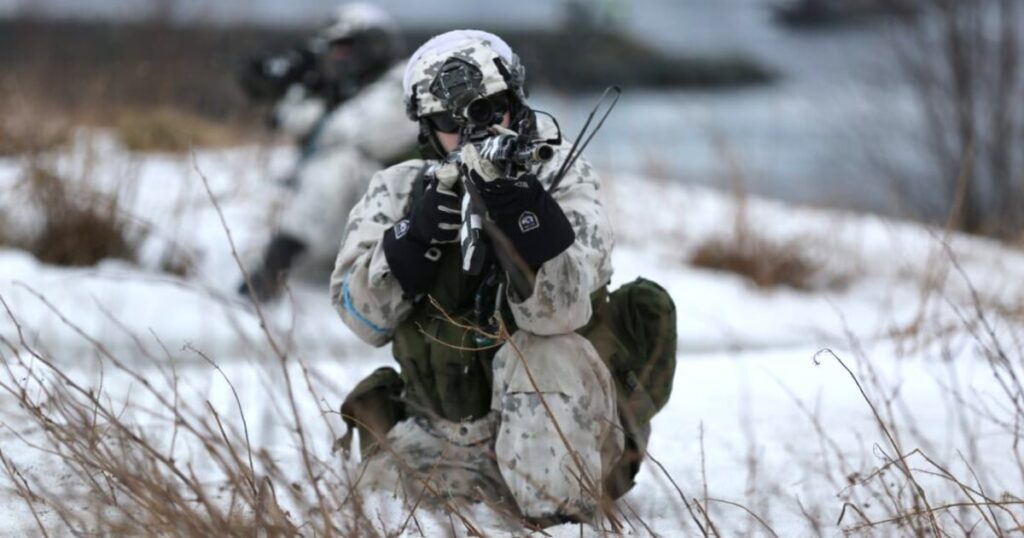ALTA, Norway — Nestled waist-high in Arctic snow miles away from civilization, U.S. Marines looked through binoculars from their machine-gun position toward the frozen ridge, watching for signs of enemy movement.
Their battalion commander in this exercise, Lt. Col. Thomas Driscoll, approached the trench they dug by hand into the mountainside and asked what they needed.
“More ammo,” one of them replied.
In a nearby tent, fellow soldiers dried snow-saturated cammies over a gas stove. For nearly two weeks, they lived, slept and trained on this stretch of tundra on the northern tip of Norway where temperatures regularly dip below zero.
But when the orders came to change position, they packed the tents and hurriedly filled in the ditches. Within around two hours, they’d taken off on snowmobiles and tracked vehicles, leaving barely a trace behind.
The fact that troops from the II Marine Expeditionary Force traveled thousands of miles from their base in North Carolina for two weeks of exercises, is a sign of the Arctic’s emergence as a new battlefield in a growing competition between East and West. As climate change exposes once-unreachable parts of the planet, the U.S., Russia and China are all in a race for military and economic dominance.
“The Arctic is absolutely critical,” the assistant commandant of the Marine Corps, Gen. Christopher Mahoney, said in an interview in Norway before the exercises wrapped up this week. “The opening of the Arctic as far as maritime waterways, in lines of communication, make it that much more important.”
The Marines were among some 20,000 troops from 13 nations taking part in NATO’s “Nordic Response” exercise, part of larger war games that are the biggest since the Cold War. The exercise extended to Sweden and Finland, NATO’s two newest members, whose addition in the last year added more than 800 miles to the alliance’s border with Russia.
The scenario: A major adversary is launching a cross-border invasion from…
Read the full article here





